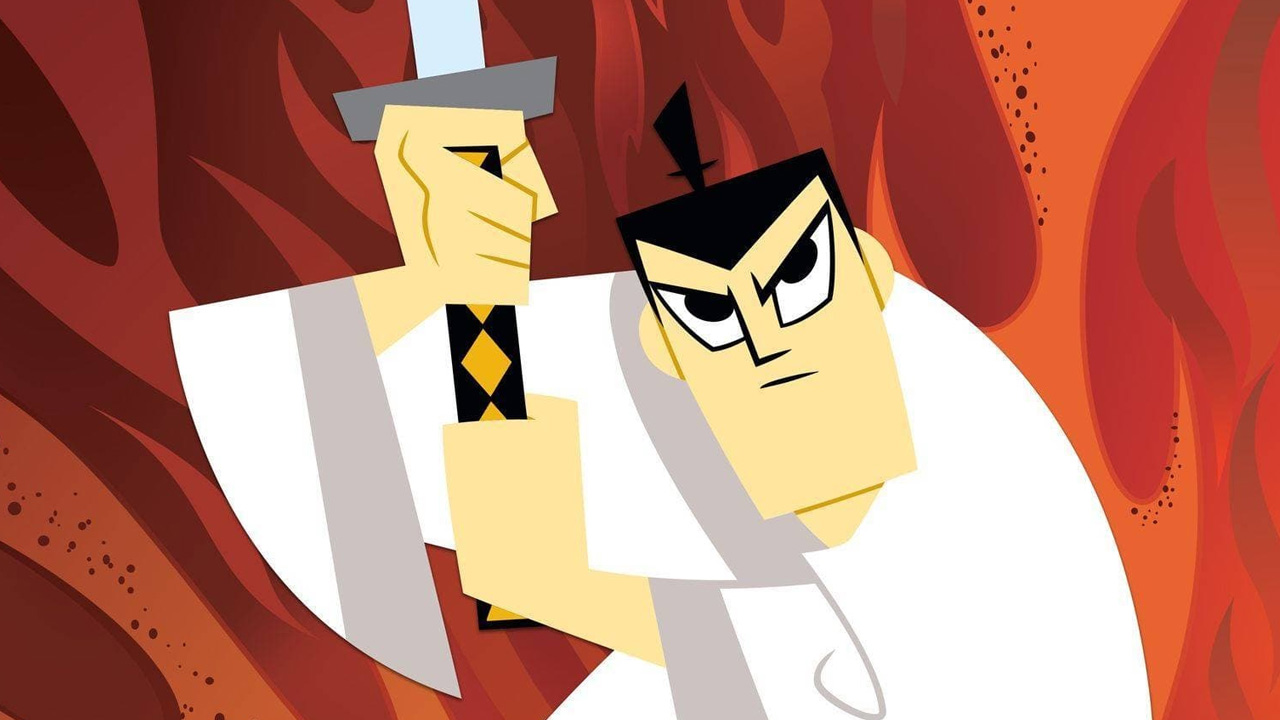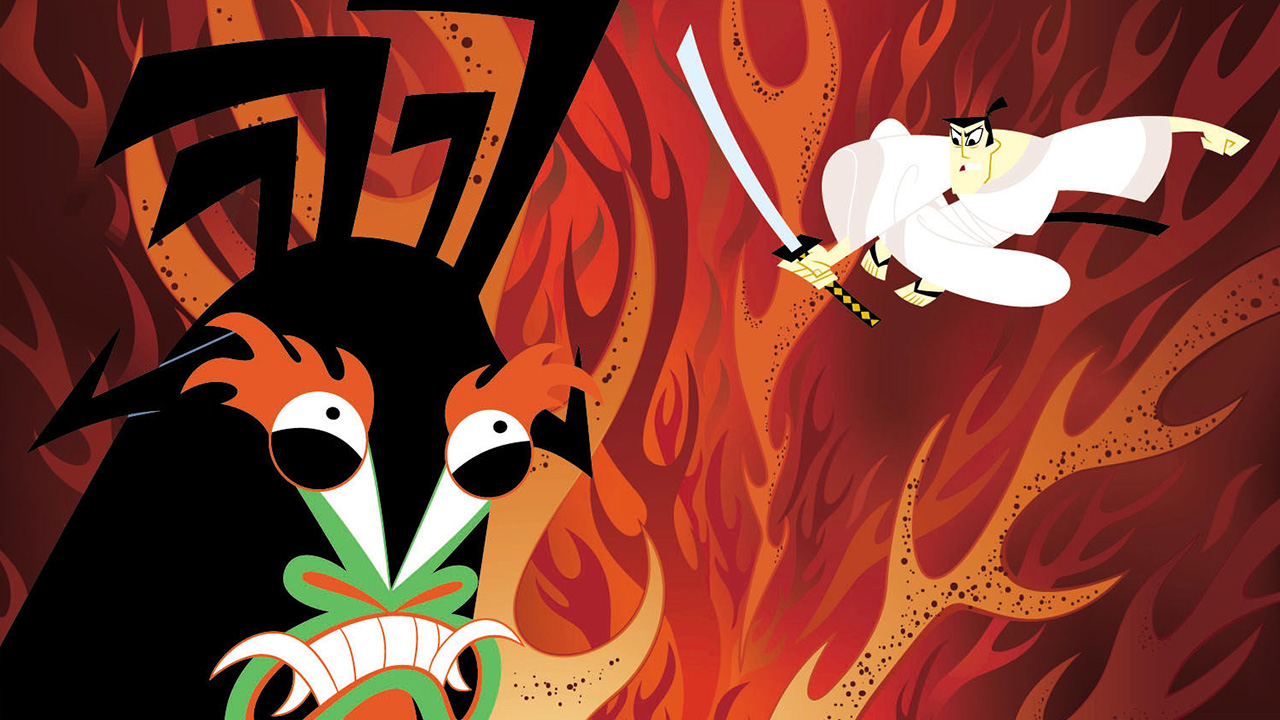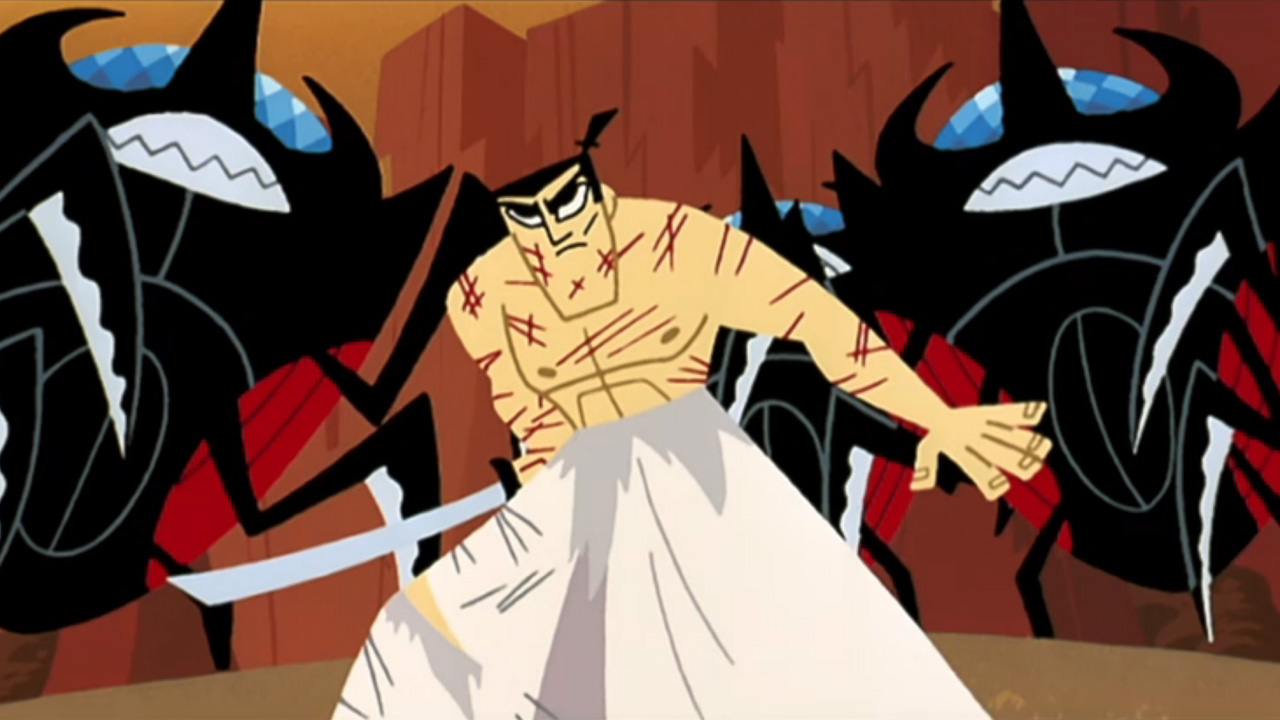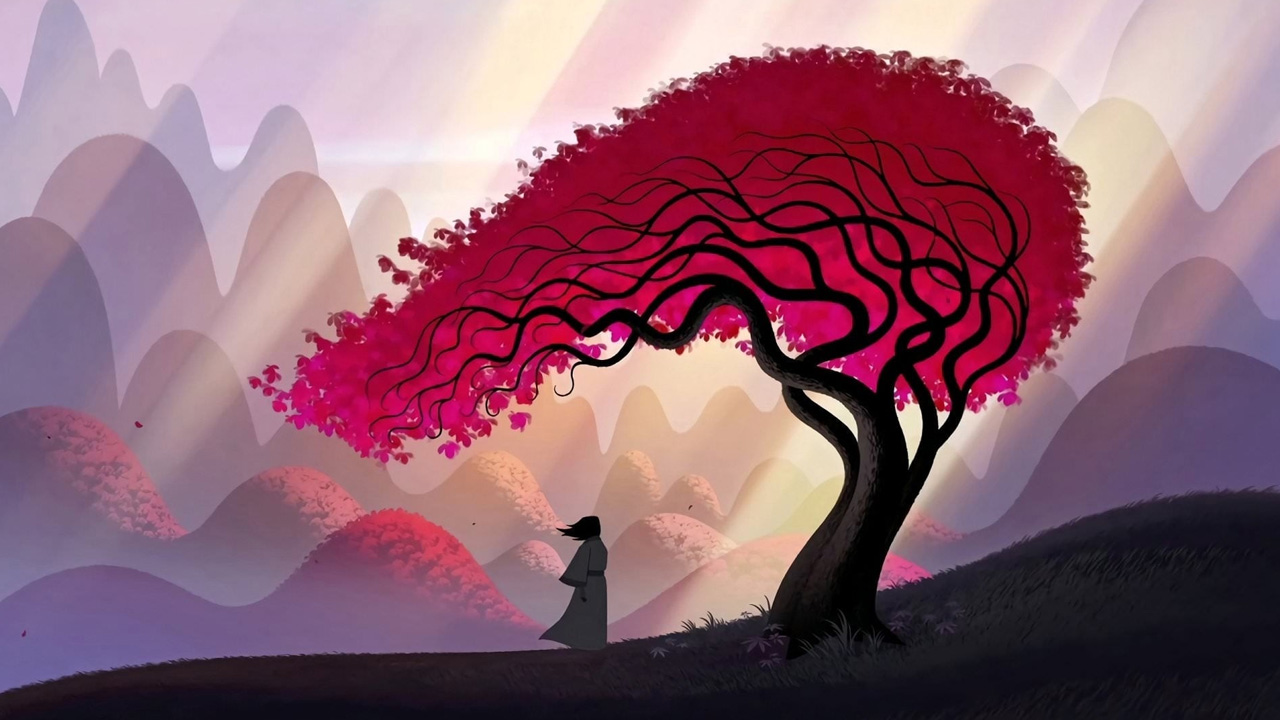Retrospective: how Samurai Jack brought cinema to kids television

Liam Maguren bows to the honour and majesty of Genndy Tartakovsky’s Samurai Jack, the 2001 action cartoon series that brought cinema to kids television.
Around the dawn of the Millenium, animation cinema experienced a significant turning point. Pixar cemented 3D as the way of the future with the release of 1999’s Toy Story 2. Two years later, DreamWorks’ pop-culture phenomenon Shrek would imprint itself in the meme-ories of Millenials worldwide, going on to win the first Academy Award for Best Animated Feature Film.
This seismic change caused the last big wave of 2D blockbusters to crash onto the rocks with a loud ‘flop’. DreamWorks’ other respectable animated titles, namely 2000’s The Road to El Dorado and 1998’s The Prince of Egypt, didn’t come close to making the big Shrek-bucks. Neither did Disney’s huge hand-drawn efforts like 2002’s Treasure Planet, 2001’s Atlantis: The Lost Empire and 2000’s comedy masterpiece The Emperor’s New Groove. Also spare a thought for Brad Bird’s The Iron Giant and Don Bluth’s Titan A.E.—two original, ambitious, sci-fi box office bombs.
In just a few years, 3D swiftly became the primary form of blockbuster animation. But while movie studios were taking 2D animation out of cinema, Genndy Tartakovsky attempted to put cinema into 2D animated television with 2001’s Samurai Jack.
Coming off the back of two juggernaut hits for Cartoon Network, Dexter’s Laboratory and The Powerpuff Girls, Tartakovsky and his team ventured into bold new territories with the first season of Samurai Jack. They weren’t aiming to create just some wacky cartoon show—they envisioned a serial sci-fi action adventure of cinematic proportions (but still goofy enough to justify the ‘cartoon’ part of a Cartoon Network show).
As an acknowledgement of its cinematic ambitions, the show debuted with Samurai Jack: The Premiere Movie. Essentially the first three episodes of season one, semi-representative of a traditional three-act structure, the feature knuckled down on all the traits that would become iconic to the series.
The first half of episode one is almost wordless. Beyond an opening monologue from the show’s big bad Aku, voiced to perfection by the great Mako, the beginning relied on its music and visuals to depict this samurai’s globe-trotting journey of gaining skills from different cultures and becoming a man who could adapt to any situation. If you consider the typical set-up for any TV show back then, where stories leaned heavily on dialogue within the same backdrops, this was a hell of a move to pull right out of the gate.
Upon his return, we hear our hero speak for the first time as he confronts Aku. The showdown takes place in a surreal lair of static flames, fully displaying the show’s willingness to juggle playful perspectives with abstract architecture. The art also shows off the team’s abundantly vibrant animation with Aku’s silky shapeshifting clashing with the samurai’s smooth-but-direct strikes. Our hero would have won the fight had it not been for Aku’s admittedly clutch play of sending him to the distant future.

Episode two, the middle act, dunks him and the viewer into a sea of super sci-fi. If Star Wars and Blade Runner had a test-tube baby, this would be its 2D world. Through some cringy yoof-speak, our samurai adopts the name Jack and comes to terms with his tragic circumstances. Not only must he let go of his old life and navigate this barely-comprehensible new age, but he also has to endure seeing Aku revered in the way all capitalist overlords are revered: on a billboard trying to sell you shit.
Samurai Jack‘s cinematic ambitions become most obvious with its third episode/act. It’s essentially Tartakovsky’s take on Akira Kurosawa’s Seven Samurai, except there’s just one samurai and the desperate villagers are British archaeological dogs. (I did mention this show’s goofy, right?)
Jack’s fight with some menacing robo-beetles pushed the limit of cartoon violence. Sounds pierced as sharply as Jack’s blade. Severed mech limbs squirted oil like exposed arteries. The backdrop blazed with the colour of blood red. This was gore without the gore, and to a pre-pubescent kid who wasn’t allowed to see The Matrix yet, it was an introduction to the joys of action cinema—on TV.

Much like episode one’s globe-trotting introduction, this compelling climax did it all without saying a word. Even the music takes a backseat for a large portion of it, keeping the action pulsating through selective soundscapes that added shine to a sword swing and weight to the oily sludge that dosed Jack with each “kill.”
Alongside these disciplines, Samurai Jack felt like a TV show constantly finding ways to break out of its 4:3 confines. This could come in the form of sudden split screens, emulating a comic book in motion, or a shift to faux widescreen to emphasize an extreme close-up or the vastness of an environment. For the latter, the show trusted its audience to soak the world in, holding the scene and the scenery for extended periods of time with nothing but atmospheric sounds as guidance.
This might not seem all that impressive to today’s viewers treated to the current golden age of streaming, where million-dollar shows like Stranger Things and Game of Thrones regularly apply cinematic language. But 2001 was a different era, especially in regards to a half-hour animated kids series not gifted with 2022 technology or running time to spare.

The show provided the blueprint for Tartakovsky’s Clone Wars, easily the best Star Wars TV series of the time (and still is, if you ask certain people). The following decade would see him shelve Samurai Jack to helm the beloved, but under-watched, Sym-Bionic Titan alongside the very family-friendly Hotel Transylvania films.
However, much like its time-flung hero, Samurai Jack eventually returned in the distant year of 2017 to finish what it started, letting Tartakovsky dip his toes back into more mature and cinematic territories. I say “dip his toes” because he full-on belly-flopped into filmic artistry with Adult Swim series Primal.
Essentially The Land Before Time on PCP, Primal is an unapologetically gory and totally wordless dino-human buddy adventure series. Storyboards are the script, and the sound design is its dialogue, doing everything required to grow its characters and keep the viewer engaged with its pseudo-Jurassic world. It earned Tartakovsky and his team the award for Outstanding Animated Program at the 2021 Primetime Emmys.
While this is strictly an adult-only show with hardly a goofy bone in its body, Primal is an undeniable evolution of the style and cinematic language Tartakovsky introduced with Samurai Jack. You may not see it in the show’s blender of bloodshed, but you’ll hear it in the quieter moments with the rustle of the leaves and the sounds of a running river. In those instances, your ears can make you believe Jack is walking in the background, having a break from the chaos to absorb his surroundings.
Those moments stick with you. That’s the power of cinema.


















